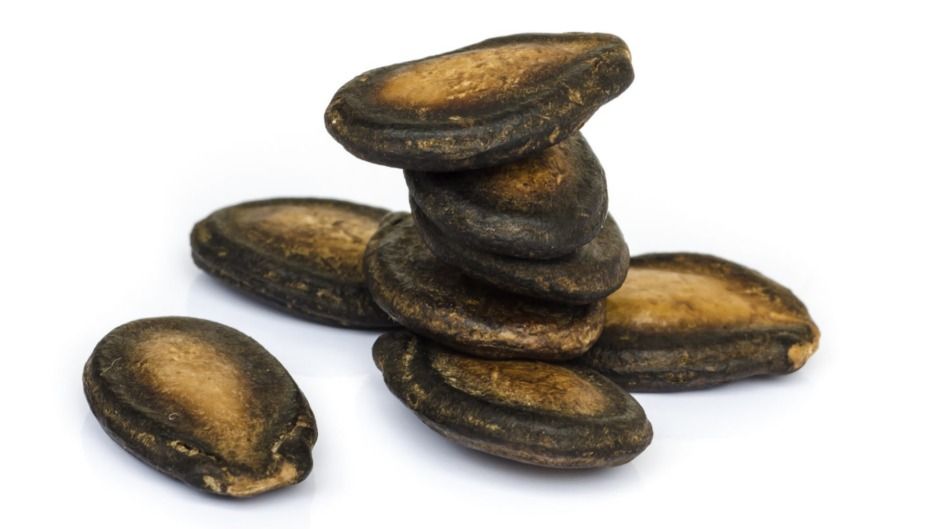Blog Posts
Fish skin and watermelon seeds – five health foods on the rise in 2020
“Wellness has never been more damn popular,” says nutritionist Rick Hay. “I’ve been in the business for 25 years and I’ve never seen more people into health as they are now.”
Boosted by an aging population, social media and increased consumer awareness around nutrition, the global health and wellness market is estimated to be worth $US4.2 trillion and growing.
“You also have millennials into health influencing older generations,” says Hay. “At cafes, I now hear 20-year-olds asking their parents if they would like to try a turmeric latte.”
Consumer willingness to spend more amounts of money on supplements and “superfoods” has also contributed to growth in the wellness sector, but dietitians warn against buying products hawking health benefits without proper scientific backing.
“If you’re spending $100 on a product and you’re not really sure if it works, you’re better off using that money to buy lots of fruit, vegetables, lean proteins and whole grains,” says Joel Feren, accredited practicing dietitian and spokesperson for the Dietitians Association of Australia.
New or repackaged health and wellness products won’t stop hitting the market anytime soon, though. Here’s a field guide to five health foods on the rise in 2020.
Broccoli sprouts
Raw sprouts have been embraced by the healthy eating set since the 1970s, however the little shooting seeds are enjoying new life as a so-called superfood thanks to a high concentration of vitamins and minerals across different varieties.
Woolworths reported a seven per cent lift in the sprout category last year and one of the most popular varieties is the broccoli sprout with its large amount of sulforaphane. The compound is a rock star in the health world and fans claim sulforaphane can help slow the ageing process, reduce inflammation and promote brain health.
“If people want to eat broccoli sprouts on a sandwich, I think that’s great,” says Feren. “Just don’t put all your eggs in one basket and think a handful of broccoli sprouts once a day will lead to eternal health.”
Cauliflower flour
Or cauliflour perhaps?
Two years ago it looked like cricket flour was going to be the Next Big Thing in wheat flour alternatives, but the world has decreed vegetables are more appealing than crushed insects. Vegetable-based flours are on the rise and cauliflower flour, especially, has an increasing market presence.
Sydneysider Lorraine Sarayeldin launched PomPom Paddock cauliflower flour in October, responding to more Australians identifying as gluten intolerant.
“Cauliflower is quite flavour neutral, which makes the flour mix a great cup-for-cup replacement for plain flour,” she says. “The mix also contains brown rice flour, quinoa flour, psyllium husk and sorghum so it can perform like a traditional flour.”
PomPom is available in selected health food stores and online, priced at $12.99 for 340 grams. The brand’s next range of cauliflower products will include a pancake mix and pizza base.
“Certainly, cauliflower is a good source of fibre and vitamin C, but I reckon let cauliflower be cauliflower,” says Feren. “You can already steam it, bake it and grill it, so why turn it into rice, pancakes or a pizza base?”
Collagen shakes
Collagen is a structural protein and typically the main component of connective tissue such as bone cartilage and tendons. It’s found naturally in foods such as egg whites, fish and animal bones, and spruikers of collagen rich products suggest intake will fight wrinkles, improve digestion and increase muscle mass.
Research shows the global collagen market is projected to reach more than $US6.5 billion by 2025, with the food and drink sector accounting for the largest rate of revenue growth. Collagen powders, such as The Beauty Shake made from sustainably farmed fish skin, are particularly big business.
“Japan has been using marine collagen for many years,” says Beauty Shake creator Dr Jaroslav Blazek, who completed his PhD in food science at the University of Sydney. “I looked into marine collagen to see if it was another mythical ‘miracle’ treatment, but found there’s a lot of science that shows its benefits.”
The chocolate flavoured Beauty Shake costs $69.90 for 750 grams (or 20 serves). Feren says there is some emerging evidence that shows collagen supplements may help with exercise related joint pain and osteoarthritis. “However, and this a dietitian’s favourite saying, more research needs to be done before we can categorically say take it or leave it.”
Kakadu plum
Feren says the native Australian Kakadu plum has a phenomenally high amount of vitamin C plus high levels of vitamin E, iron, calcium, folate and magnesium. “It really does pack a nutritional punch.”
The Northern Australia Aboriginal Kakadu Plum Alliance is a consortium of Aboriginal enterprises established in 2018 to ethically process Kakadu plum (also known as gubinge) across the country. As a result, home cooks and chefs are now discovering more uses for the sour-sweet fruit (jams and chutneys are popular) while dried Kakadu plum is finding its way into smoothies, protein balls and slices.
Nut and seed butters
Butters made from seeds and nuts are the hot new cousins of alternative non-dairy “milks”.
“We’re seeing every bloody type of the seed under the sun in products now,” says Hay. “Most seeds are going to contain a lot of nutrients, so seed butters aren’t a bad way to go for health.”
Peanut butter has been around as long as sliced bread, but it’s now joined by cashew, almond and macadamia spreads and – for anyone with a nut allergy – watermelon, pumpkin and sunflower seed butters.
“Nut and seed butter can be very nutritious, but consumers should be mindful about what else is included in the butter such as added sugar and oil,” says Feren. “When I meet with clients, I usually recommend products that are 100 per cent nut or seed based.”
Originally posted: https://www.goodfood.com.au/good-health/fish-skin-and-watermelon-seeds–five-health-foods-on-the-rise-in-2020-20200110-h1kz9v
